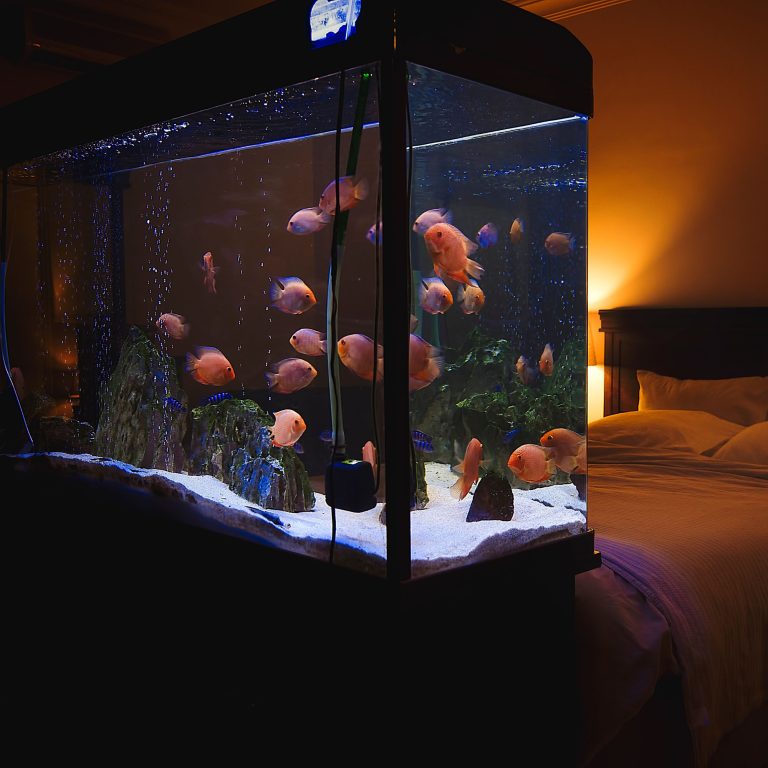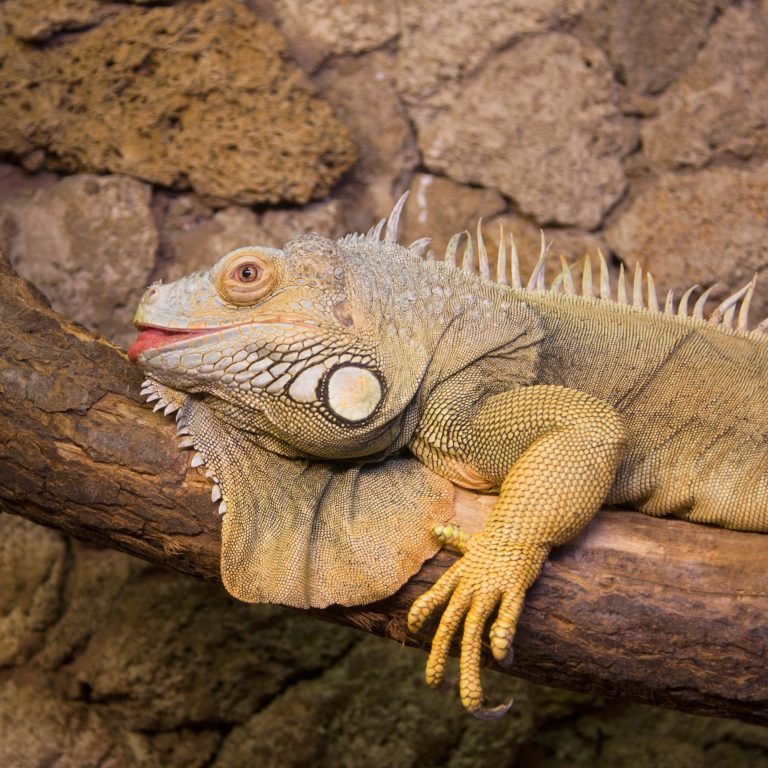Say Goodbye to Chill: Heat Up Your Reptile Tank with the Best Heating Pads
Enhancing Your Reptile’s Habitat
When it comes to providing a comfortable and healthy environment for your reptile, proper heating in reptile tanks is of utmost importance. Reptiles are ectothermic animals, meaning they rely on external heat sources to regulate their body temperature. Maintaining the right temperature in their habitat is crucial for their overall well-being and physiological functions.
The Importance of Proper Heating in Reptile Tanks
In the wild, reptiles have the freedom to move and bask in the sun to regulate their body temperature. However, in a captive setting, it is our responsibility as pet owners to ensure that their habitat mimics their natural environment as closely as possible. This includes providing optimal heating conditions to support their metabolic processes, digestion, and overall activity level.
Reptiles have specific temperature requirements depending on their species, and maintaining these temperatures within their enclosure is essential for their health. Insufficient heat can lead to sluggishness, poor appetite, and even illness. On the other hand, excessive heat can cause stress, dehydration, and other adverse effects.
Introduction to Reptile Heating Pads
To create a suitable environment for your reptile, reptile heating pads are an excellent option to consider. These heating pads are designed to deliver a constant and controlled heat source, ensuring that your reptile’s tank maintains the appropriate temperature range. They are typically placed under the tank or on one side of the enclosure to create a warm zone for your reptile to thermoregulate.
Reptile heating pads work by utilizing heating elements that generate heat when connected to a power source. The heat is then transferred to the tank floor, providing a warm surface for your reptile to rest on. These pads are specifically designed to emit a gentle and consistent heat, allowing your reptile to safely regulate its body temperature.
The use of reptile heating pads offers several benefits, including precise temperature control, energy efficiency, and ease of installation. They provide a reliable heat source for your reptile, allowing them to access the necessary warmth whenever needed.
As you explore the world of reptile heating pads, it’s important to consider factors such as temperature control and regulation, size and fit for your reptile tank, as well as safety features and durability. By selecting the right heating pad for your reptile’s needs, you can create a comfortable and thermally suitable environment that promotes their overall health and well-being.
For more information on different types of reptile heating pads available, such as reptile heat mats, reptile heat tape, and more, check out our article on reptile heating pads.
Understanding Reptile Heating Pads
To provide your reptile with the optimal environment, it’s important to understand how reptile heating pads work and the benefits they offer. These heating pads are designed specifically for reptile tanks, providing a controlled heat source to create a warm and comfortable habitat for your scaly friend.
How Reptile Heating Pads Work
Reptile heating pads are typically placed underneath the tank or on one side of the enclosure to mimic the natural warmth reptiles would experience in their native habitats. These pads are equipped with heating elements that generate heat, which is then transferred to the tank floor or the surface it is placed on.
The heating pads are usually connected to a power source and have temperature controls that allow you to set the desired warmth for your reptile. They use electricity to generate heat, which is evenly distributed across the pad’s surface. This ensures that your reptile receives a consistent and comfortable heat gradient.
It’s worth noting that reptile heating pads should always be used in conjunction with a thermostat or temperature controller. This helps regulate the heat output and prevent overheating, ensuring the safety and well-being of your reptile. For more information on reptile heat pad thermostats, check out our article on reptile heat pad thermostat.
Benefits of Using Reptile Heating Pads
Using reptile heating pads offers several benefits for both you and your reptile companion. Here are some key advantages:
-
Temperature Regulation: Reptiles are ectothermic creatures, meaning they rely on external heat sources to regulate their body temperature. Heating pads provide the necessary warmth for your reptile to maintain their preferred temperature range, allowing them to thermoregulate and stay comfortable.
-
Promotes Digestion and Metabolism: Adequate warmth is essential for reptiles to properly digest their food and maintain a healthy metabolism. Reptile heating pads create a warm environment that aids digestion and supports overall metabolic functions.
-
Encourages Natural Behavior: By providing a warm and cozy habitat, reptile heating pads help promote natural behaviors like basking and thermoregulation. These behaviors are vital for your reptile’s physical and mental well-being.
-
Improves Health and Immune System: Maintaining the right temperature can have a positive impact on reptile health. Reptile heating pads ensure that your pet is not exposed to temperature extremes that could compromise their health or weaken their immune system.
Remember to consider the specific needs of your reptile species when choosing a reptile heating pad. Some reptiles, like snakes or turtles, may require specialized heat pads. For more information on selecting the best heating pads for your reptile tank, check out our article on best reptile heating pads.
By understanding how reptile heating pads work and the benefits they provide, you can create a comfortable and suitable environment for your reptile companion. Ensure that you follow proper installation guidelines and regularly monitor the temperature to maintain a safe and cozy habitat for your scaly friend.
Factors to Consider
When selecting a reptile heating pad for your reptile tank, there are several important factors to consider to ensure the well-being and comfort of your scaly friend. Pay attention to temperature control and regulation, size and fit for your reptile tank, and safety features and durability.
Temperature Control and Regulation
One of the key factors to consider when choosing a reptile heating pad is the ability to control and regulate the temperature. Different reptile species have specific temperature requirements, so it’s important to select a heating pad that allows you to adjust the temperature according to your reptile’s needs. This ensures that your reptile’s tank maintains the proper temperature gradient, providing them with the necessary warmth to thrive.
Some heating pads come with built-in thermostats or temperature controllers, allowing you to set and maintain the desired temperature range. Others may require you to use an external reptile heat pad thermostat for accurate temperature control. It’s important to monitor the temperature regularly using a reliable thermometer to ensure it remains within the optimal range for your reptile’s species.
Size and Fit for Your Reptile Tank
The size and fit of the heating pad are crucial for its effectiveness in maintaining the desired temperature in your reptile tank. It’s essential to choose a heating pad that matches the size of your tank to provide adequate heat coverage. Measure the dimensions of your tank and select a heating pad that covers a significant portion of the tank floor.
Additionally, consider the power output or wattage of the heating pad. Larger tanks may require higher wattage heating pads to achieve the desired temperature. It’s important to refer to the manufacturer’s guidelines or consult with a reptile expert to determine the appropriate size and wattage for your specific reptile species and tank size.
Safety Features and Durability
Safety should always be a top priority when selecting a reptile heating pad. Look for heating pads that have built-in safety features such as automatic shut-off mechanisms to prevent overheating. These safety features provide an added layer of protection for your reptile and help prevent accidents or injuries.
Durability is also a crucial factor to consider, as reptile tanks often require consistent heating for long periods of time. Choose a heating pad made from high-quality materials that can withstand the demands of reptile tank environments. It’s important to select a heating pad that is resistant to moisture and easy to clean, ensuring its longevity and reliability.
By considering these factors – temperature control and regulation, size and fit, and safety features and durability – you can choose a reptile heating pad that meets the specific needs of your reptile and provides them with the warmth and comfort they require. For more information on reptile heating pads and other reptile heating options, check out our articles on reptile heating pads, reptile heat tape, and reptile heat mats.
Types of Reptile Heating Pads
When it comes to providing the right amount of heat for your reptile’s tank, reptile heating pads are a popular choice among pet owners. These pads are designed specifically to create a warm and comfortable environment for your reptile. In this section, we will explore three types of reptile heating pads: under tank heating pads, radiant heat panels, and heat tape.
Under Tank Heating Pads
Under tank heating pads, also known as heat mats, are one of the most common types of reptile heating pads. These pads are placed underneath the tank to provide heat from the bottom, mimicking the warmth your reptile would experience in their natural habitat.
Under tank heating pads are usually made of durable materials that can withstand the weight of the tank placed on top. They come in various sizes to accommodate different tank dimensions. It’s important to choose a heating pad that fits your reptile tank properly to ensure efficient heat distribution.
These heating pads are typically equipped with a thermostat or temperature control mechanism, allowing you to regulate the temperature and maintain a suitable heat gradient for your reptile. For more information on reptile heat pad thermostats, check out our article on reptile heat pad thermostats.
Radiant Heat Panels
Radiant heat panels are another option for providing heat to your reptile’s tank. These panels are mounted on the ceiling or side of the tank and emit infrared radiation to warm up the enclosure. The radiant heat panels produce a gentle and even heat, creating a comfortable environment for your reptile.
One of the advantages of radiant heat panels is their ability to distribute heat uniformly throughout the tank. They are particularly beneficial for larger enclosures where maintaining consistent heat levels can be a challenge. However, it’s important to position the panels correctly to avoid overheating or creating hotspots.
Radiant heat panels often come with built-in thermostats or temperature control features, allowing you to adjust the temperature to suit your reptile’s needs. To learn more about reptile terrarium heating pads, check out our article on reptile terrarium heating pads.
Heat Tape
Heat tape, also known as reptile heat cable, is a flexible heating element that can be used to provide heat to specific areas of your reptile’s tank. This type of heating pad is versatile and can be easily installed in various tank setups.
Heat tape is typically made of a durable material that can withstand high temperatures. It is often used to create localized heating zones, such as basking spots or nesting areas, within the tank. The tape can be adhered to the tank’s surface or secured using clips or adhesive.
To ensure the safety of your reptile, it’s important to use a thermostat or temperature controller with heat tape to regulate the temperature and prevent overheating. For more information on reptile heat tape, visit our article on reptile heat tape.
By considering the specific needs of your reptile and the requirements of their tank setup, you can choose the most suitable type of heating pad for your pet. Remember to always follow the manufacturer’s instructions for installation and maintenance to ensure the well-being and comfort of your reptile companion.
Installation and Maintenance Tips
To ensure the proper functioning and longevity of your reptile heating pads, it’s essential to follow the correct installation and maintenance procedures. By taking the necessary steps, you can create a safe and comfortable environment for your reptile. Here are some tips to help you with the installation and maintenance of your reptile heating pads:
Proper Placement of Heating Pads
When installing the heating pads in your reptile tank, it’s crucial to consider the specific needs of your reptile species. Different reptiles have different habitat requirements, including temperature gradients and basking areas. Place the heating pad on one side of the tank to create a warm zone, allowing your reptile to regulate its body temperature effectively. It’s important to ensure that the heating pad covers only a portion of the enclosure, leaving enough space for your reptile to move away from the heat if needed.
Remember to place a layer of insulation material, such as a reptile heat mat or reptile heat tape, between the heating pad and the tank’s bottom to prevent direct contact and potential burns. For more information on different types of reptile heating pads, check out our article on reptile heating pads.
Monitoring and Adjusting Temperature
Regular monitoring of the temperature inside the reptile tank is crucial to ensure your reptile’s well-being. Use a reliable thermometer or thermostat to accurately measure the temperature in various areas of the tank, including the warm zone and the cool zone. This will help you maintain the right temperature gradient for your reptile’s specific needs.
Adjust the temperature settings of the heating pad accordingly to maintain the desired temperature range. It’s important to note that temperature requirements may vary depending on the species of reptile you have. Avoid overheating the tank, as it can be harmful to your reptile’s health. Consider using a reptile heat pad thermostat for precise temperature control and peace of mind. You can find more information on reptile heat pad thermostats in our article on reptile heat pad thermostat.
Cleaning and Maintaining Heating Pads
Regular cleaning and maintenance of your reptile heating pads are essential to keep them functioning properly. Follow these steps for effective cleaning and maintenance:
-
Power off and unplug: Before cleaning, make sure to turn off and unplug the heating pad to avoid any electrical accidents.
-
Remove any debris: Gently remove any debris or substrate that may have accumulated on the surface of the heating pad. Use a soft brush or cloth to wipe away the dirt.
-
Damp cloth cleaning: Take a damp cloth or sponge and wipe the surface of the heating pad to remove any residue or stains. Avoid using harsh chemicals or abrasive materials as they may damage the pad.
-
Dry thoroughly: Allow the heating pad to air dry completely before plugging it back in and turning it on. Ensure that the pad is completely dry to prevent any electrical hazards.
Regularly inspect the heating pads for any signs of wear and tear. If you notice any damage, it’s important to replace the heating pad promptly to ensure the safety of your reptile. For more information on reptile heat pad maintenance and other reptile heating options, check out our articles on reptile heat mats, reptile heat tape, and best reptile heating pads.
By following these installation and maintenance tips, you can provide a comfortable and safe habitat for your reptile, allowing them to thrive in their environment. Remember to always prioritize the well-being of your reptile by providing the appropriate heating and monitoring their habitat conditions regularly.







